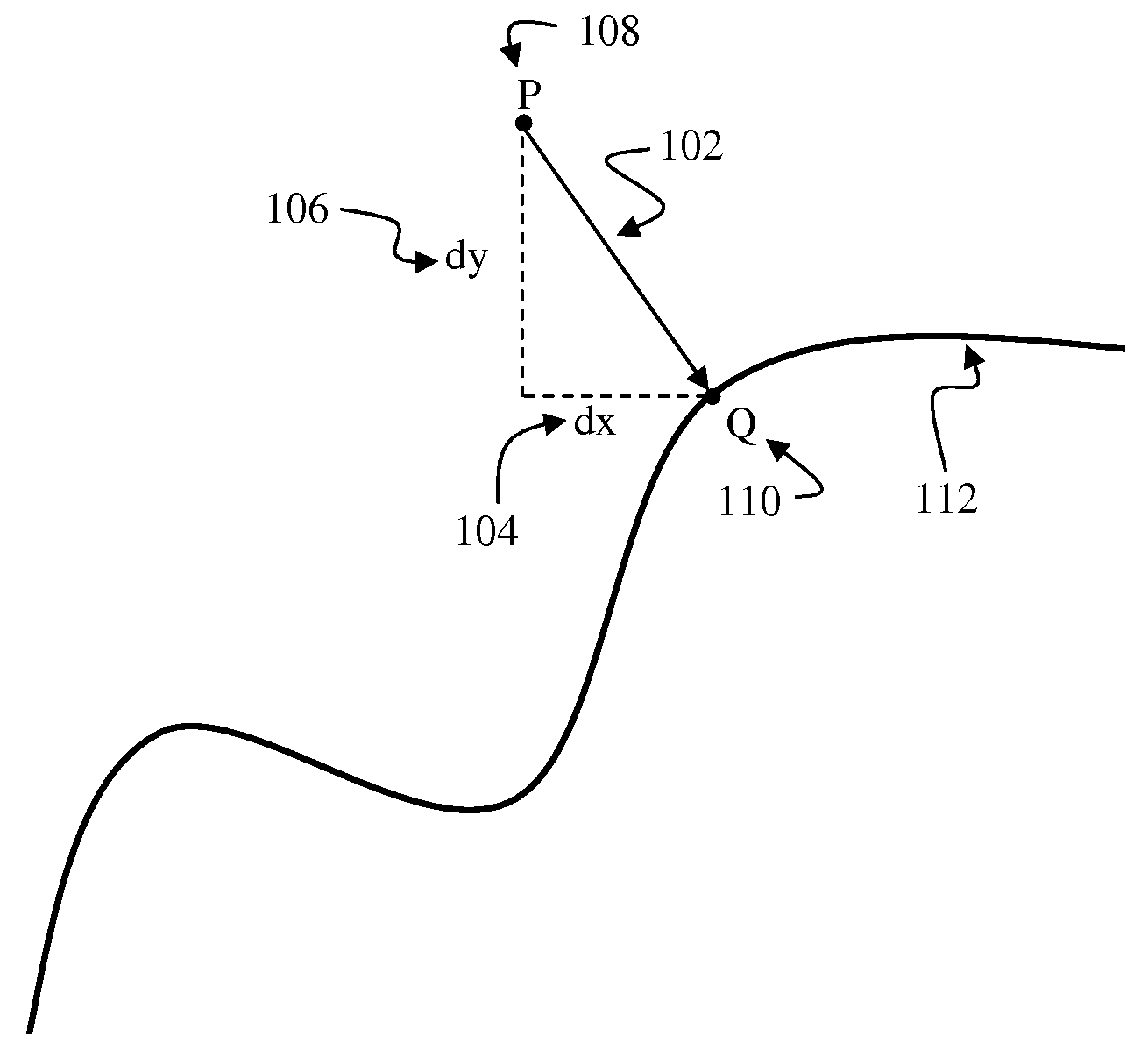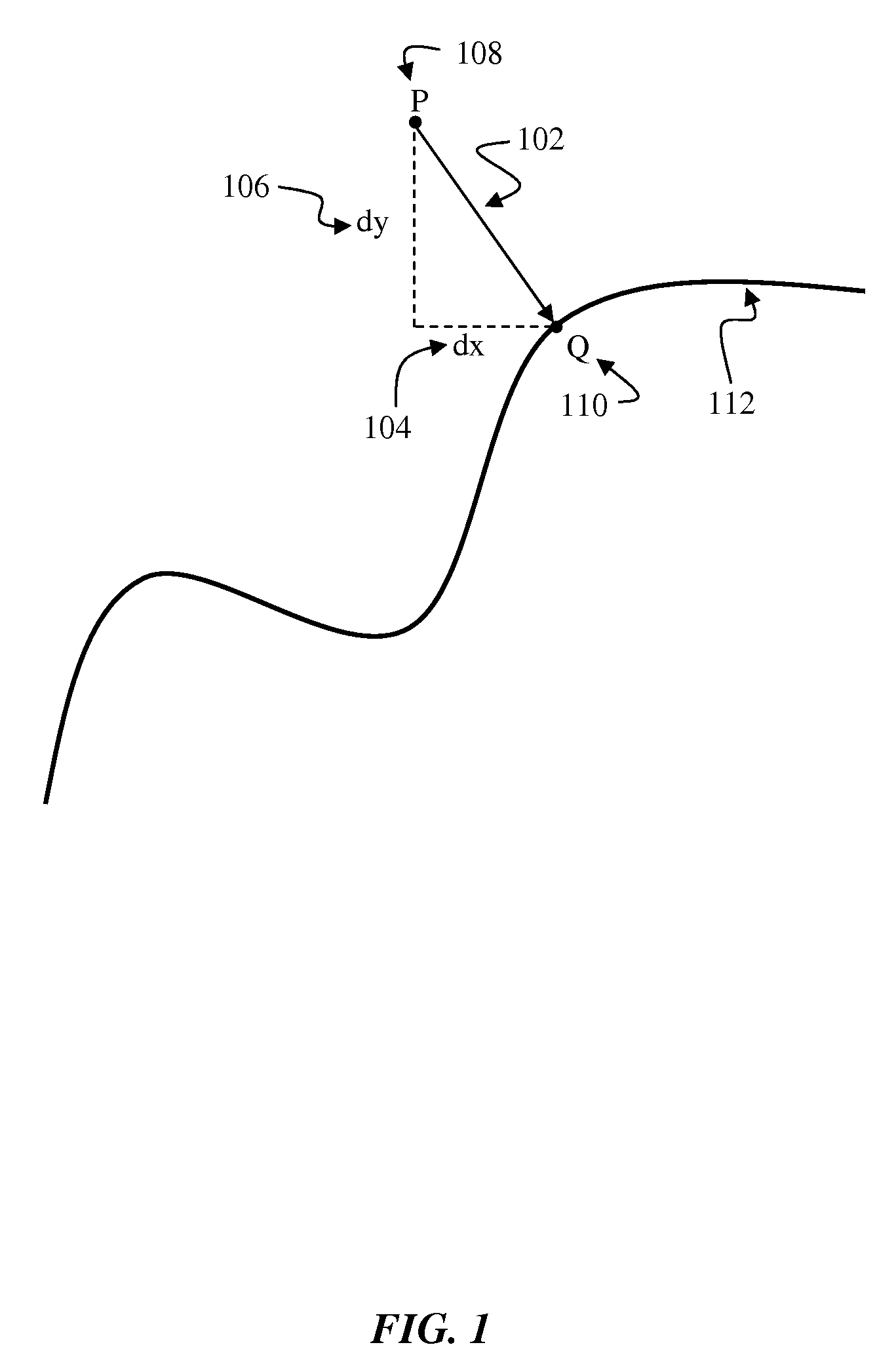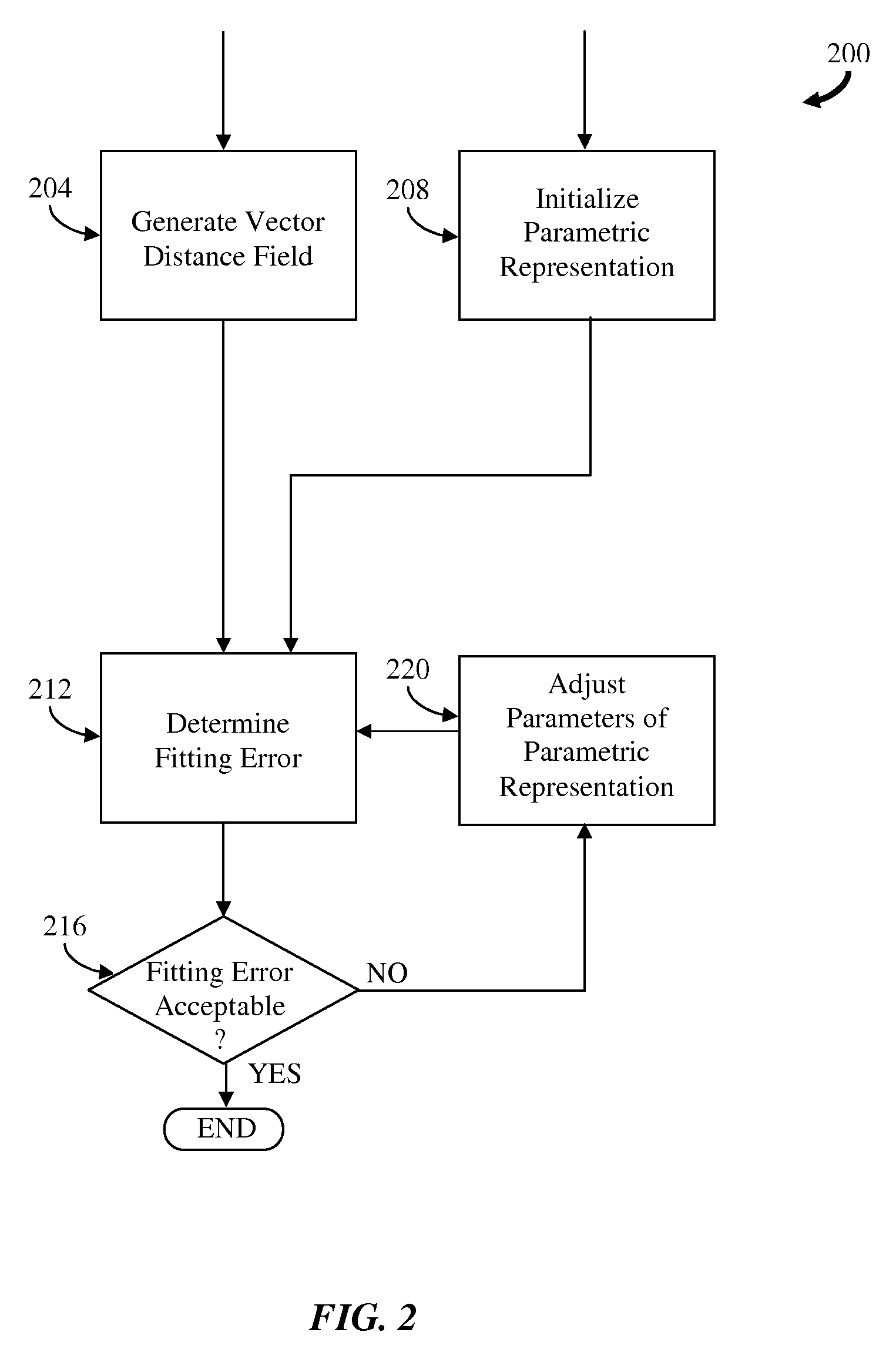Method for recognizing a shape from a path of a digitizing device
- Summary
- Abstract
- Description
- Claims
- Application Information
AI Technical Summary
Benefits of technology
Problems solved by technology
Method used
Image
Examples
first embodiment
[0052]In a first embodiment, a piecewise polynomial estimating curve composed of two-dimensional cubic Bezier curve segments is fit to a sequence of digitized points representing a path of a digitizing device on-the-fly, i.e., as each digitized point is provided to the application. In this embodiment, the digitized points are recorded using a two-dimensional input device such as a computer mouse or a digital pen, or a three-dimensional input device such as a force feedback device or a three-dimensional tracking device.
[0053]Standard curve fitting approaches measure a distance from each digitized point to the estimating curve, which requires finding a closest point on the estimating curve for each digitized point each time parameters of the estimating curve are adjusted. FIG. 3A illustrates the closest points Qi 311, 312, . . . , 319 (generally Q) on the estimating curve 300 corresponding to each sample point Pi 301, 302, . . . , 309 (generally P) of the object. As illustrated in FIG...
second embodiment
[0094]A second step of the second embodiment is to initialize a parametric surface representation to approximate the set of digitized points. There are various approaches for initializing the parametric surface. For example, a user can construct an initial parametric surface composed of a set of coarse surface patches using a drawing application or computer aided design system. As a second example, the parametric surface can be automatically initialized as a minimal bounding sphere surrounding the digitized points. As a third example, the parametric surface can be initialized to be a coarse triangular mesh that is generated either automatically or semi-automatically to approximate the surface.
[0095]A third step of the second embodiment is to iteratively adjust parameters of the parametric surface, where the adjustment is responsive to a fitting error between the parametric surface and the set of digitized points using the vector distance field. Parameters of the parametric surface a...
fourth embodiment
[0103]the method of the invention determines a medial axis of a two-dimensional closed outline, where the medial axis is composed of a set of piecewise polynomial segments.
[0104]In a first step, a two-dimensional adaptively sampled vector distance field of the closed outline is generated, where the adaptive sampling rate is higher near the medial axis of the closed outline. In a second step, cells of the adaptively sampled vector distance field that are inside the closed outline and that contain the medial axis are determined. There are various ways to determine cells that contain the medial axis from the vector distance field. For example, the directions of vector distances at the corner vertices of a cell containing the medial axis are substantially different. Alternatively, the divergence of the vector distance field within a cell containing the medial axis is substantially greater than zero. The divergence of the vector distance field can be determined from the partial derivativ...
PUM
 Login to View More
Login to View More Abstract
Description
Claims
Application Information
 Login to View More
Login to View More - R&D
- Intellectual Property
- Life Sciences
- Materials
- Tech Scout
- Unparalleled Data Quality
- Higher Quality Content
- 60% Fewer Hallucinations
Browse by: Latest US Patents, China's latest patents, Technical Efficacy Thesaurus, Application Domain, Technology Topic, Popular Technical Reports.
© 2025 PatSnap. All rights reserved.Legal|Privacy policy|Modern Slavery Act Transparency Statement|Sitemap|About US| Contact US: help@patsnap.com



